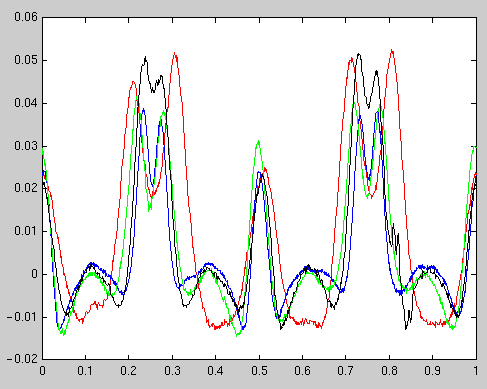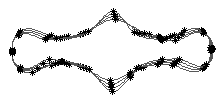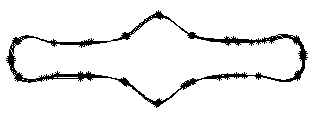Our purpose is to describe diatom shape variation using a minimum of parameters in a way that would allow us not only to discriminate between different species but also to reconstruct a very close approximation to the original shape of a diatom given particular parameter values. Active Shape Models (ASM) have become very popular in the last ten years for representing shapes in a compact way. They are built from a set of labelled examples. Each example is labelled with the same number of points, usually positioned in the places of visual significance, called landmarks. Detection of landmarks is a non-trivial problem often performed by hand, which is a laborious and time-consuming task. Several methods for automatic landmark detection have been introduced recently, but none of these are appropriate to our problem for several reasons. We have therefore developed our own method for the automatic detection of landmarks in a set of shapes.
We have noticed that the diatom specimens belonging to the same species have similar curvature profiles, i.e. they have a similar number of curvature "peaks" and "valleys" positioned in the same order along the curvature. Moreover, diatom specimens belonging to different species have differing curvature profiles. Below you can see a graph of contour curvatures belonging to the specimens of Tabellaria flocculosa.

Based on the above, we have decided to choose the landmark points in the place of curvature peaks and valleys and to recover the overall shape from these points, using hermite splines that follow the smooth outlines of the diatoms. The points in the labelled examples have to be put in the correspondence from one example to another. We do this on the basis of the curvature peak/valley relative positions, their heights and the contour tangent values at the corresponding points.
Using above method we can extract the same number of landmarks for all specimens belonging to the same species and hence build an ASM of the species shape on the basis of extracted data. Below you can see the main modes of variation in an ASM representing the shape of Tabellaria flocculosa species.




You can find more details on the method described above in the article:
Hicks Y., Marshall D., Martin R.R., Rosin P.L., Bayer M.M. & Mann D.G. (2002). Automatic landmarking for building biological shape models. Proceedings of the 2002 IEEE International Conference on Image Processing (ICIP 2002), September 22-25, 2002, Rochester, NY, USA. Vol II, 801–804. ISBN 0-7803-7622-6 (Proceedings), ISBN 0-7803-7623-4 (CDROM)
Back to results page
Back to top of page